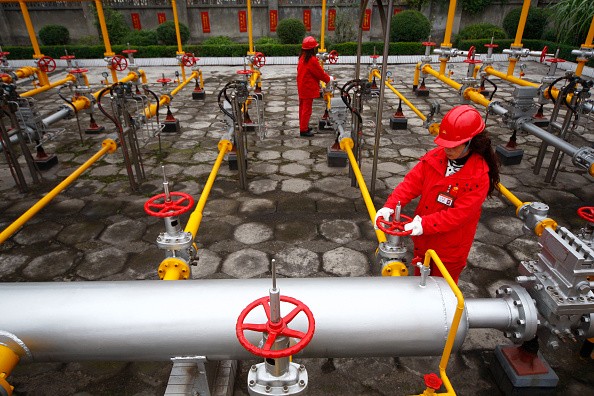China's oil market is attracting more suppliers vying to get a share in the growing market, as OPEC's decision to cut production has opened doors for other suppliers to join in and compete.
Last week, China National Petroleum Corp. (CNPC) opened a new corridor for oil trade as oil shipments started on the 800-kilometer China-Myanmar pipeline, from the oil terminal at Made Island on Myanmar's west coast to Yunnan Province in China, the National reported.
The new pipeline could serve as an alternative for seaborne crude from the Arabian Gulf and Africa by bypassing the Strait of Malacca, where incidents of piracy are growing and becoming a security concern for China.
Another way, it could also drive more competition from suppliers, such as the first oil shipment at Made Island, which came from crude oil piped in from Baku in Azerbaijan and from the Kurdish region in Iraq.
Although the competition for China's oil market has been going on for more than a decade, it has now expanded to include other new players such as U.S. exporters and suppliers from Latin America and western Africa.
"The key to understanding the shifting trade flows is to be found in the arbitrage spreads," Eugene Lindell, a senior oil market analyst at JBC Energy consultants in Vienna, said.
"OPEC's decision to cut production has appreciated Dubai crude [prices] relative to other benchmarks, like dated Brent and [West Texas Intermediate], so that with freight rates still low it makes sense to arb more crude in from the Atlantic Basin, particularly as this is typically much sweeter and therefore easier to process than the Middle Eastern stuff," Lindell added.
According to the latest report of the International Energy Agency, China's oil market reached an all-time high in the first three months of 2017, with 12.2 million barrels per day (BPD) due to the surge in demand for petrochemical feedstock and jet fuel.
The two main competitors in the battle are Saudi Arabia and Russia. Russia has signed several oil deals with China in the past eight years.
Russia overtook Saudi Arabia as China's largest supplier, as its oil exports increased by about 25 percent to more than 1 million BDP, only slightly higher than Saudi's export level. China's so-called teapot refiners, or independent refiners, were also on the side of the Russians.
"The strategic side to it is that China is wary of depending on Middle Eastern crude for more than 50 percent of its supplies," Lindell said. "There is quite simply a preference to cast the net far and wide when it comes to crude procurement."
According to Lindell, "the corollary is that Gulf producers have been quite worried about security of demand . . . . They have sought to counter this in many ways, for example by offering more flexible credit and/or delivery terms. There is even a trend toward jointly investing into refining projects, thereby ensuring that their crude is used as baseload crude for the new refining capacity."
But PetroChina, CNPC's main subsidiary, is now negotiating with Saudi Aramco to help in the construction of a refinery that will process 260,000 BPD of crude, which will be piped through the new Myanmar pipeline to Yunnan Province.



























